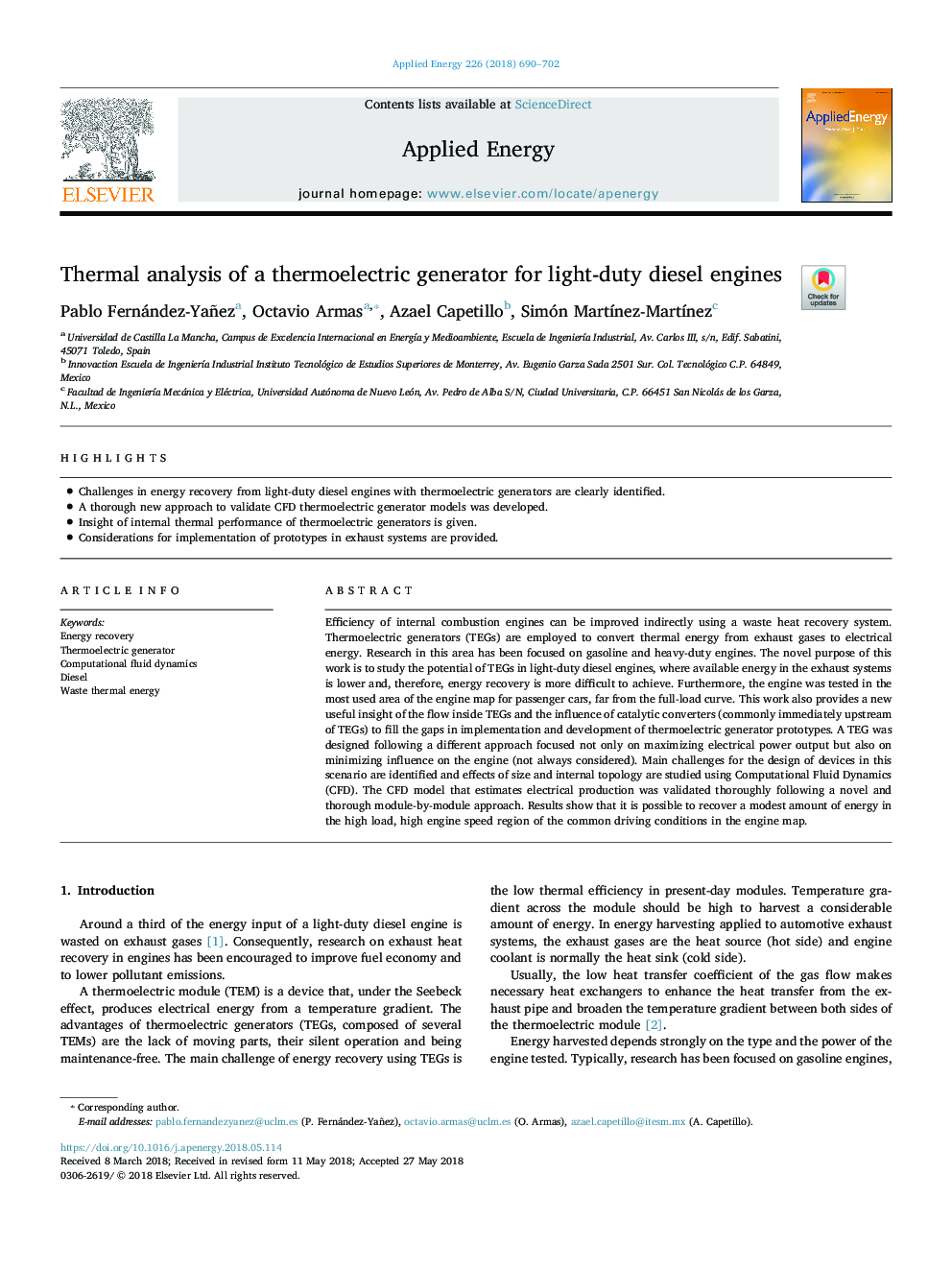| Article ID | Journal | Published Year | Pages | File Type |
|---|---|---|---|---|
| 6679784 | Applied Energy | 2018 | 13 Pages |
Abstract
Efficiency of internal combustion engines can be improved indirectly using a waste heat recovery system. Thermoelectric generators (TEGs) are employed to convert thermal energy from exhaust gases to electrical energy. Research in this area has been focused on gasoline and heavy-duty engines. The novel purpose of this work is to study the potential of TEGs in light-duty diesel engines, where available energy in the exhaust systems is lower and, therefore, energy recovery is more difficult to achieve. Furthermore, the engine was tested in the most used area of the engine map for passenger cars, far from the full-load curve. This work also provides a new useful insight of the flow inside TEGs and the influence of catalytic converters (commonly immediately upstream of TEGs) to fill the gaps in implementation and development of thermoelectric generator prototypes. A TEG was designed following a different approach focused not only on maximizing electrical power output but also on minimizing influence on the engine (not always considered). Main challenges for the design of devices in this scenario are identified and effects of size and internal topology are studied using Computational Fluid Dynamics (CFD). The CFD model that estimates electrical production was validated thoroughly following a novel and thorough module-by-module approach. Results show that it is possible to recover a modest amount of energy in the high load, high engine speed region of the common driving conditions in the engine map.
Related Topics
Physical Sciences and Engineering
Energy
Energy Engineering and Power Technology
Authors
Pablo Fernández-Yañez, Octavio Armas, Azael Capetillo, Simón MartÃnez-MartÃnez,
